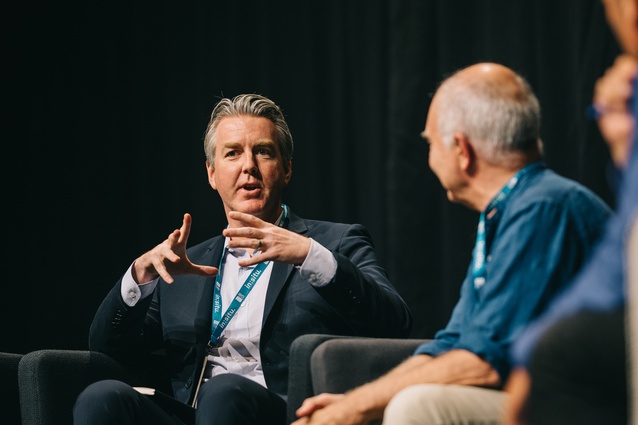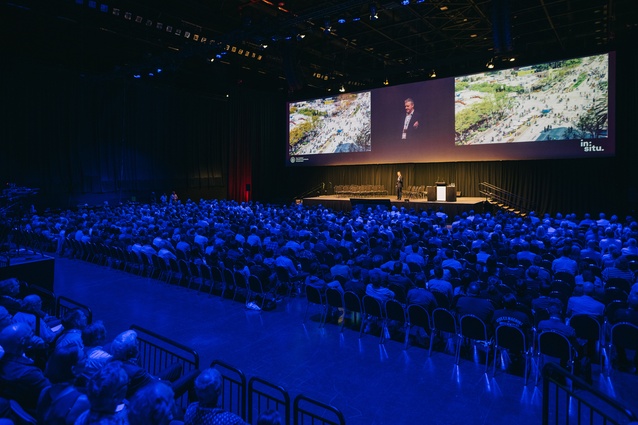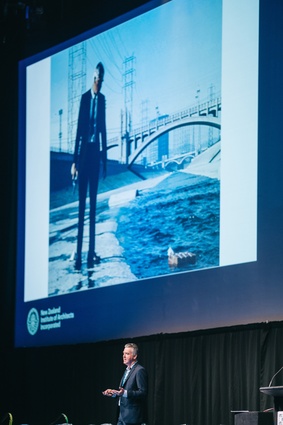In:situ 2019 series #6: Christopher Hawthorne
In the final interview from the NZIA 2019 conference, Federico Monsalve catches up with Los Angeles' Chief Design Officer about densification, progressive urbanism, the America's Cup and much more.
Federico Monsalve (FM): This is your second visit to New Zealand. Have you had time to form an opinion about our local architectural stock?
Christopher Hawthorne (CH): No, far from it. I was here two years ago to take part in this same conference and I have certainly been struck by how much more construction is happening. I gather you have had a change of government in the intervening two years, so particularly in the number of public projects but also just the amount of construction. It seems as busy here as it is in LA at the moment.
This morning at the breakfast talk that I gave for some local architects, there was a city councillor who came. It was quite interesting to hear how similar some of the political debates are, particularly around transportation and the densification of residential architecture.
FM: Let’s talk about strategies for community building while densifying a city. Is there anything you have learned about how to make sure that residential silos are not being created?
CH: This is an issue that I have been giving a lot of thought to. It was very clear to me that, in the LA context, we needed to redesign the public engagement process and get a broader cross-section of constituent or electoral feeling in terms of a ballot measure.
We have heard a very clear set of messages, arguably even mandates, from voters saying that they are interested in investing in or even taxing themselves to pay for new forms of mobility, new housing that is paid for and built by the public sector, and new open space, particularly in parts of the city that are poor, which many parts are.
But, if you were to go to only a series of community meetings, even if they were all around the city you wouldn’t necessarily hear that message. You might hear a message that is more about anxiety about change and growth. Both of those opinions, of course, are valid but there is a big gap between them.
I think part of the problem is that we have designed the process to favour a rather narrow cross-section of the public, which is to say you only have public meetings on weekday evenings, they are only in English and there is no day care. You get a particular demographic that tends to be older and whiter and wealthier. So we need to figure out ways to have a better design engagement process.
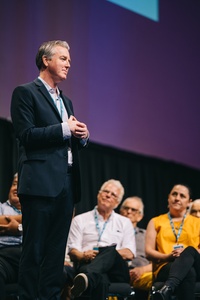
I say that also realising how challenging that is and with no notion that I have a magic solution or silver bullet. I just think we need to continue to work steadily and thoughtfully to improve that process. I have also been studying other cities and how they do that. For example, Minneapolis just passed quite a progressive new set of policies which together are called the 2040 plan for Minneapolis. They include allowing triplexes on all single-family lots citywide that match the existing scale and character essentially of the residential fabric.
When that plan was in its initial stages, it included a provision allowing fourplexes around the city. That got the kind of pushback we would get in LA if we put forward that kind of motion.
Having been through these wars in Los Angeles, I assumed that that proposal was dead and stopped paying attention. Meanwhile, the city was doing a very committed and sustained series of public engagement efforts. The plan slowly modified; Fourplexes were brought back to triplexes and other parts of the plan were changed in response to community feedback. It ended up getting really widespread support and the city council approved it almost unanimously. So, when the weather warms up a bit, I am planning to go rather soon with some colleagues to Minneapolis to study not just the plan but also the engagement process that built a constituency for it.
I think we have a lot to learn from other cities. Minneapolis is not LA – it is a different city with a different political culture – but nonetheless I think there are things for us to learn about how they structured that process of trying to build constituency support for these kinds of changes. I am interested in the range of strategies to improve that process.
FM: Traditionally, cities are built through generations in an organic way. LA, like Auckland, has seen large portions of the city built from scratch, fast, to try and make up for years of residential under-development. Is this sort of a segmented, Brasilia moment? Don’t we need an ‘organic’ or natural evolution to create successful residential areas?
CH: I think we have to be very vigilant about these projects and not let the market alone dictate the way that cities are built. One thing that I was encouraged by when the mayor asked me if I would take this job was that he told me he appreciated a particular review of mine, which is of one of these districts. It was a review of LA Live next to the Staples Center, which was built as one of these instant districts with no sense of connection to the rest of the city. In fact, we have a rather inglorious history of building those kinds of enclaves in the city.
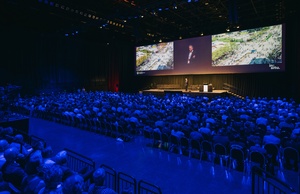
Even with commercial districts, such as The Grove, an inward-looking simulacra of public space, there has been a line of thinking that Angelenos are somehow interested in that kind of faux public space. I think the popularity of The Grove is explained by both how carefully it is built, whatever you make of its particular approach, and then also the fact that it is responding to a vacuum or absence in the public realm of spaces that are welcoming.
Angelenos, like residents of cities across the world, are interested in gathering together. If they are not given the chance to do that in a truly public space, they will do that in a commercial recreation of that space. So, I was encouraged, as I said, that the mayor told me that he appreciated that review because that review carried a lot of scepticism about that model.
Now, how you build a different approach is tricky and I talked a little bit about it in my talk yesterday morning. I am very interested in looking at projects, and there are some in LA and some elsewhere that try to build in some discussion of the unintended consequences of investment of this scale – whether that is displacement, gentrification, perversion of cultural memory or history – and attempt to build something in a ‘just add water way’, which is not the way that successful urban districts tend to grow.
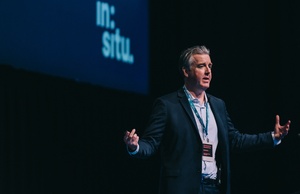
There is an interesting emerging model in its early stages of building that kind of conversation and vigilance into a design process from the beginning.
I mentioned that, in LA, there is a project called Destination Crenshaw, which is meant to almost anticipate and be a bulwark against some of the effects of the arrival of a rail line on Crenshaw Boulevard. It has been described by the council member who is spearheading the effort, Marqueese Harris-Dawson, as a mile-and-half-long outdoor museum meant to somewhat safeguard the existing cultural heritage of the neighbourhood at a time when there is a lot of anxiety about waning African American political influence in Los Angeles.
Elsewhere, I mentioned the 11th Street Bridge Park in Washington DC, which has tried to be mindful in similar ways. Perhaps a cautionary tale is the BeltLine Project in Atlanta, which started out with a lot of those ambitions and has not been able to fulfil all of them. It has been a model about where those things can falter along the way. So, again, I think we are very much in a moment where projects have to engage with those questions even though they can be fraught and difficult ones at the beginning.
FM: The connection between gentrification and homelessness is something you have also been thinking a lot about recently. What have you learned to ameliorate that problem? How you can ensure that the least fortunate ones are not being pushed out from the inner cities?
CH: Homelessness, although it has a myriad of causes, certainly has to do with mental health treatment and addiction treatment. At its core, it is an economic issue. If you chart the median rent in Los Angeles for an apartment and the homeless population, those two lines track almost identically. The problem starts with our systematic underbuilding of housing over the last 30 years.
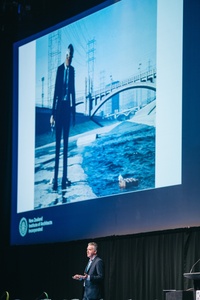
Something I learnt in a recent conversation I saw at the Architecture School convene on homelessness was something like 600,000 people in the county would be in a state of significant economic precariousness and at risk of homelessness if they were to experience an economic shock.
Part of the strategy is not just to build housing for those who are experiencing homelessness but build in protections to the extent we can. That means stronger rent control, various kinds of tenant protections and anti-displacement measures.
There was a statewide ballot measure to extend rent control to more recent buildings. There is a state law called the Costa-Hawkins Act which, essentially, says that newer construction is not subject to rent control. There was a ballot measure to make those new buildings subject to rent control that the mayor supported and I supported that didn’t pass, unfortunately. But that is the kind of effort that we need to make, along with building new facilities for those experiencing homelessness. We have to be thinking about both sides of that equation.
FM: It is a fairly radical, anti-capitalist move, isn’t it?
CH: Yeah, and I should say that this is particularly progressive in the Los Angeles context because, unlike New York or Chicago or other big American cities, we do not have a tradition of building and maintaining our own stock of public housing. On the contrary, we have a history of being quite sceptical and even hostile about the idea of public housing.
What led to a change of mayor and the Dodgers moving into Chavez Ravine was that a site had been cleared for public housing project. It was cleared to make way for affordable housing that was going to be designed by Neutra & Alexander. It was going to be very progressive from a housing and architectural point of view.
The political elite, led by the publisher of the Los Angeles Times, Otis Chandler, decided that that mayor had to go because Los Angeles was not the kind of place that produced public housing; there was a kind of red scare associated with all of that. We have a long history of hostility to those efforts and it makes what we are doing now all the more difficult and all the more significant.
FM: Part of your current role involves preparing LA for the summer Olympics in 2028. Auckland itself sees its own share of much more modestly sized, global sporting events from time to time. What design advice could you impart in that regard?
CH: Yeah, I know the America’s Cup preparations are happening and are much further along than our Olympic preparations. I don’t want to be presumptuous enough to give advice. I would just say that longer history is valuable. We tend to think of these events as only forward-looking. The best strategies for these major events are informed by a city’s own history. It is difficult with these big events to balance that historical mindset with a forward-looking one because they are seen as engines of innovation and investment.
The 2019 in:situ conference was presented by the New Zealand Institute of Architects. Christopher Hawthorne was brought to New Zealand with the support of Equus Industries and De Boer.

